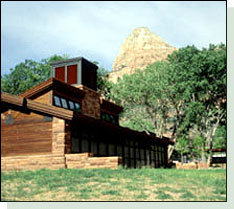natural ventilation

Natural ventilation is ventilation that is created by the differences in the distribution of air pressures around a building. Air moves from areas of high pressure to areas of low pressure with gravity and wind pressure affecting the airflow. The placement and control of doors and windows alters natural ventilation patterns.
Natural ventilation used to be the most common ventilation method of allowing fresh outdoor air to replace indoor air in a home. Today it is usually not the best ventilation strategy, especially for homes that are properly air sealed for energy efficiency. Natural ventilation also usually doesn't provide adequate moisture control.
Natural ventilation occurs when there is uncontrolled air movement or infiltration through cracks and small holes in a home – the same ones you want to seal to make your home more energy efficient. Opening windows and doors also provides natural ventilation. Because of central heating and cooling systems, however, most people don't open windows and doors as often. Therefore, air infiltration has become the principal mode of natural ventilation in homes.
A home's natural ventilation rate is unpredictable and uncontrollable – you can't rely on it to ventilate a house uniformly. Natural ventilation depends on a home's airtightness, outdoor temperatures, wind, and other factors. Therefore, during mild weather, some homes may lack sufficient natural ventilation for pollutant removal. Tightly sealed and/or built homes may have insufficient natural ventilation most of the time, while homes with high air infiltration rates may experience high energy costs.
Spot ventilation can be used to improve the effectiveness of natural ventilation. However, if both spot and natural ventilation together don't meet your home's ventilation needs, then you should consider a whole-house ventilation strategy.
